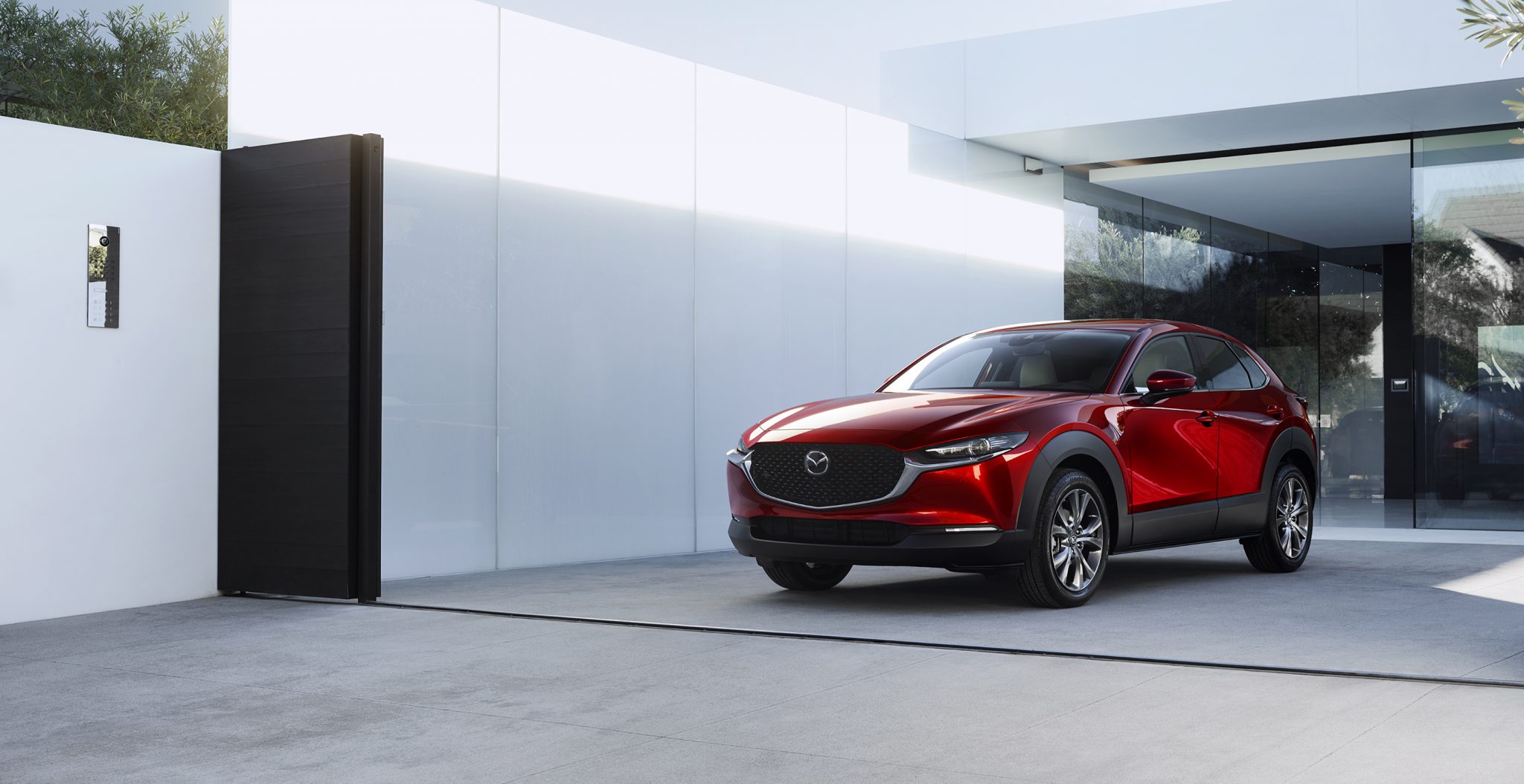By Peter Perrotta
It took me awhile to figure it out. But, one day recently, as I was staring at the front end of the 2020 Mazda CX-30, it came to me.
The design folks at Mazda are minimalists. It seems like a simple thought, but it really did take me awhile to latch onto that thought.
If you look at the front end of this car, an SUV first introduced into the Mazda lineup last year, it at once looks, a bit bold, a bit sculpted and most definitely minimalist, all at the same time.
That same theme is carried over into the interior ergonomics of the 2020 Mazda CX-30, which I recently test drove for one week.
The interior is sleek and solid looking, but at the same time low-key. It gives you a pleasant feel, without being too ostentatious.
While that may seem like a simple thing to accomplish, from a design standpoint, it really isn’t. By going the minimalist route, one always risks producing a product that comes out flat, or boring.
In my mind, Mazda most certainly succeeds in putting forth the minimalist design approach. However, at the same time, it makes cars that are built with a good, sound quality and are just bold and edgy enough to appeal to the mass market consumer.
Interestingly enough, while I call this a minimalist approach, the powers that be at Mazda call it something else.
Mazda calls their themed design concept – which, by the way, is carried over into all their models – the Kodo design philosophy.
What is the Kodo design philosophy?
Taken right from the Mazda media guide, it states: “Kodo design aims to express feelings and experiences of power and beauty that come with the image of things in motion. Mazda wants this image of motion to be evoked from Mazda design even when the models are sitting still. Therefore, Mazda design incorporates energetic and graceful elements to replicate sense of flow.”
It continues: “Inspirations used to develop the beauty of motion include natural elements, such as wind and water, as well as animal movement and athletic display.”
I really can’t tell you if what I call minimalism and what Mazda terms the Kodo philosophy are one in the same. But, they seem to share some common ground: to make the experience of driving a Mazda comfortable and almost seamless.
In that, the folks at Mazda, succeed.
The CX-30 I drove for the week was the Premium Package AWD model. It carries an MSRP sticker price of $31,370 and had very little added options. The only options added to the base price of $29,600 were $275 for a frameless automatic dimming mirror, $450 for a navigation SD card and $1,045 for destination and delivery.
This car is comfortable to drive. Is easy to get in and out of. And carries out most of the routine functions of what the modern day car needs to do on an above average level.
It is powered by a 2.5 liter, four cylinder engine that puts out 186 horsepower at 186 pound feet of torque. This engine is coupled with a six speed automatic transmission.
The power and driving dynamics of this CX-30 are solid, but, at the same time, somewhat flat.
When you put the gear selector into the “sport” mode the CX-30 perks up a bit, giving it that extra boost off the line or for making aggressive passes.
But, at the end of the day, this CX-30 is not what I would call a “driving enthusiasts” vehicle. It checks all the right boxes for handling, comfort, visibility and such, but if you are looking for a more dynamic driving experience, it falls a little bit short in that regard.
The CX-30 is offered in four different trim levels: base ($23,000); Select ($25,000); Preferred ($27,300) and Premium ($29,300).
The Department of Transportation’s EPA fuel ratings for this model come in at 27 miles per gallon on average – with 32 mpg’s on the highway and 27 around town.
The EPA estimates that the average annual fuel cost of running the CX-30 to be $1,500 per year as it uses about 3.7 gallons of gas per every 100 miles driven.
This particular vehicle has not received a rating for the government’s 5-star crash safety test yet.
My tester was a handsome Polymetal Gray Metallic with black leather seats inside.
It comes with an abundance of standard features, like navigation, heated seats, power moonroof, 18-inch alloy wheels and premium audio with 12 speakers and much more.
While I give this vehicle generally solid marks, all around, if there is one thing I would have the folks at Mazda change, it would be its infotainment system.
The 8.8 inch multi-functional color display, mounted at the top of the center of the dashboard, is adequate, but for a vehicle of this quality it should be a bit more dynamic. The controller functions for the infotainment system can be a bit confusing at times.
However, the biggest drawback to the infotainment system is the voice recognition command system.
When I am driving, I like to use the voice command systems of all the cars I test. If gives me a way to test out their functionality and is much safer, as well.
I found the Mazda voice command system in this CX-30 to be inferior. I found myself having to repeat myself several times just to get it to perform simple functions like making a phone call or inputting a navigation address. It got to be quite frustrating, at times. A software upgrade is in order for this operation.
Peter Perrotta’s On The Road column appears weekly. Questions, comments and suggestions are welcome. He can be contacted at [email protected]

